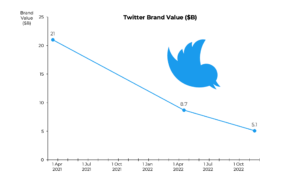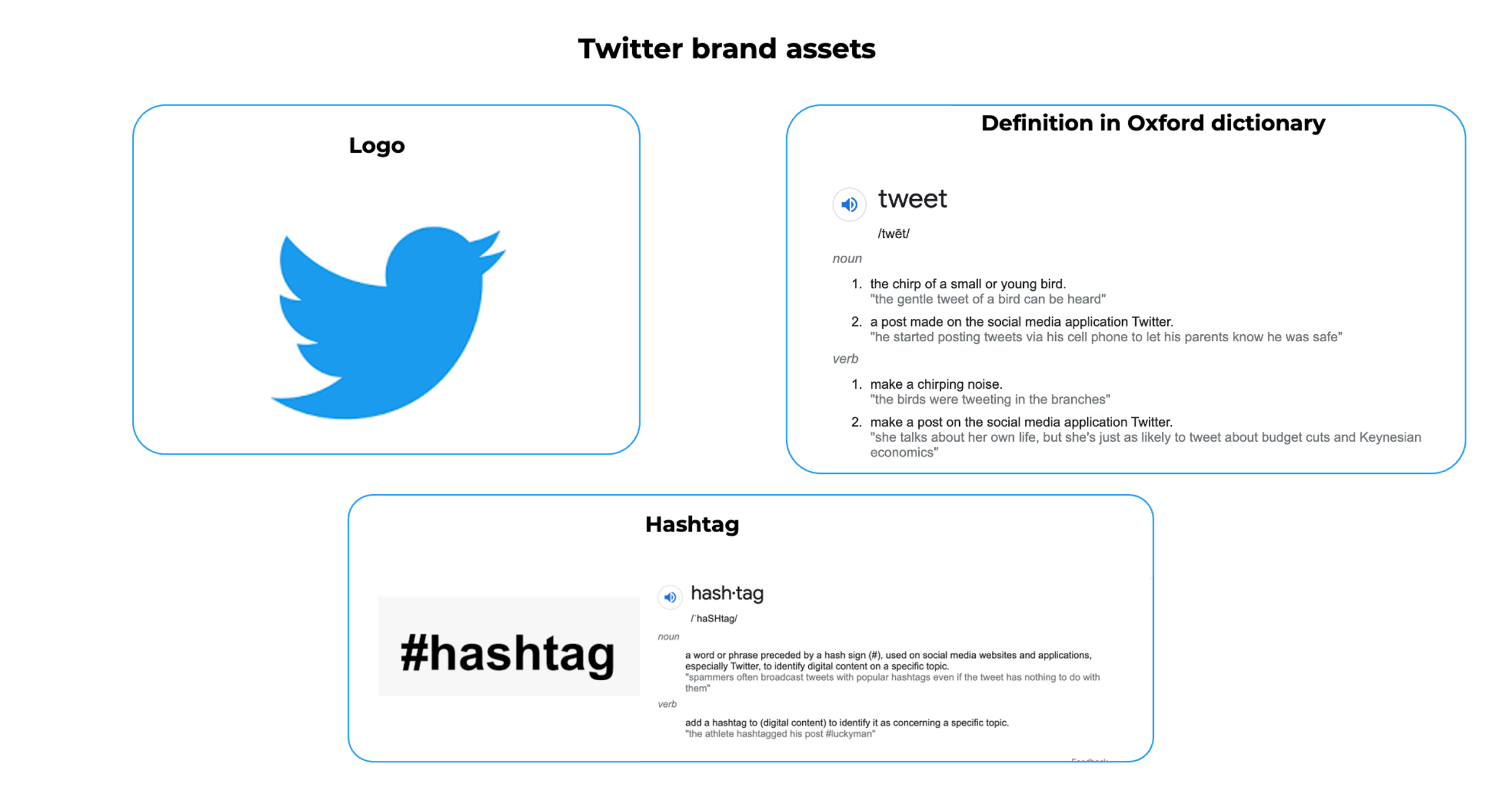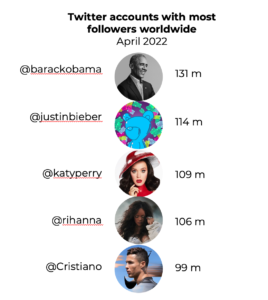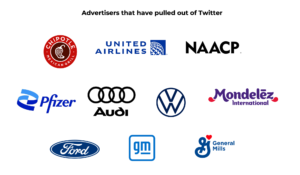By Joanna Seddon, Managing Partner, Presciant
The Twitter brand has lost three-quarters of its value in the last 18 months. Presciant’s analysis, based on brand equity and market cap data, quantifies Twitter brand value at $21 billion on 1 March 2021, representing approximately 35% of the value of the company. The value fell dramatically well before Musk announced his takeover bid—to an estimated $8.7 billion by 1 April 2022. Following Musk’s acquisition, Twitter brand value has sunk further. We estimate it at $5.1 billion today, following the delisting.
What went wrong? Twitter had a lot going for it.
Twitter is not a traditional business. It has no car factories, no spacecraft. The company has only two assets and both of them are intangible.
One is the technology platform, the other is the Twitter brand. Both were quite exceptional. Technology IP was the underpinning and precondition for success. No-one else could offer anything like the same ability for millions of people to interact globally and in real-time. And the branding is brilliant. The simplicity of the bird and the name. An iconic ‘symbol logo’, one which needs no accompanying text established in a fraction of the time needed by Nike, Apple and, most recently MasterCard. A brand which became a verb almost overnight. The instantly memorable hashtag.
Together the technology and the brand powered the platform’s growth to a share price of $77, around 400 million active monthly users, and approximately $5 billion revenues from advertisers, by spring 2021. Even though Twitter has never made a profit, operating margins were up and losses down.
Twitter offered immediacy, action, and personal connection. It was in-the-moment,became the first forum for breaking news. It provided a means to unite people and drive social and political movements. Without Twitter, the Arab Spring, Occupy Wall Street, Black Lives Matter, and Me Too most likely would not have existed, and definitely not spread to become global mass protests. It created a place where anyone can feel a connection to political leaders, such as Obama, cultural celebrities, and sports heroes.
The downfall of Twitter began well before Musk’s takeover.
Why did the brand value plunge from $21B to $8.7B between March 2021 and April 2022? We believe there are two reasons.
The first reason was a failure to innovate. Continuous innovation is the precondition for brand value growth. This is true for all brands in all categories – not just tech, but everything from cookies (flavor innovation has revived the Oreo brand), to personal care (eos expansion into shaving cream), to automotive (Musk’s own electric vehicles at Tesla). Twitter did not innovate for 10 years, then tried, but was all over the place, with Fleets (disappearing Tweets), Vine (short form videos), Voice Tweets, and Spaces. Most of these were attempts to catch up by copying others (especially Snapchat and TikTok). Jack Dorsey, Twitter’s founder and CEO, was distracted by Square. A lot of money was wasted.
The second reason was the lack of attention to brand safety. The platform long disregarded the lying, the bullying, the proliferation of threats to individuals, the outpouring of fake news, the foreign government manipulation, which the format encourages. He backtracked, most notably by banning Trump after January 6, but Twitter still lagged behind other social media companies in taking action.
Twitter started to look old. And, it lost trust. While it continues to be important for elitist audiences, especially those working in politics, entertainment and news media, it has been losing its appeal with mass audiences and younger generations. 75% of GenZ use YouTube daily, 59% TikTok and Instagram, only 34% Twitter. GenZ care about being on the cusp of culture and technology and only trust brands that they see as doing the right thing.
On April 4th this year, when Elon Musk offered to buy the company for $44 billion, the jury was out. There was hope he might shake Twitter up and revive it. Instead, he’s done just about everything possible to destroy brand trust, and with it, the business. It began when he tried to renegotiate the deal, after tech stock prices fell, accusing Twitter of lying about the number of fake accounts on the website as his excuse. Immediately firing most of the top executives, announcing the layoff of 50% of employees, and introducing the ‘blue check’ mark, which meant that anyone could buy a Twitter account verification for $8, sent alarm bells screaming. The number of fake accounts shot up at an astonishing pace. Major advertisers have pulled out in droves, terrified about the type of tweets their copy might be placed next to. Musk’s erratic behavior—bringing laid-off employees back, killing off the blue check mark has intensified the erosion of trust.
What will the future hold? Is the brand past the point of no return? Can Elon Musk reinvent and revive Twitter?
We believe he could (which is not the same thing as saying he will….). The technology is still there. No rival platform can compete with the Twitter platform’s in providing instant global communication for millions of users simultaneously. The reasons for Twitter’s success still exist—its immediacy, personal connection, and ability to galvanize mass action. The brand, though battered, has unequaled recognition, great power, and intrinsic value. Elon Musk’s other brands help. Both Tesla and SpaceX have been through roller coaster rides of disparagement and derision. There is irrational faith in Musk’s bad behavior, an unsubstantiated belief in his ability to pull the impossible off. We’ll see…..



